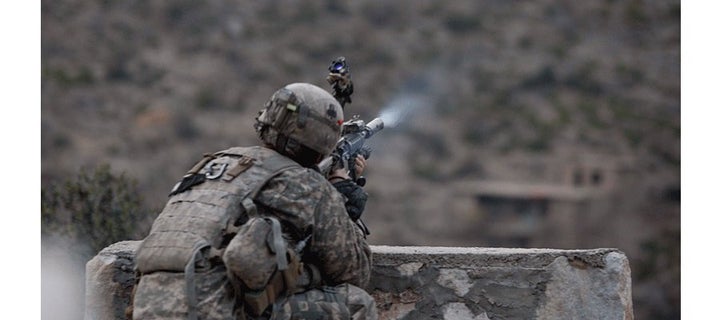
While the numbers of Americans killed in service in Afghanistan are often reported, the numbers of the wounded are under-reported. The number of wounded service members per month is approximately six hundred. That's twenty a day or nearly one every hour. Many people find that surprising, as reports of those wounded in action rarely gain media attention.* The high ratio of wounded to killed we have seen in both the Afghanistan and Iraq wars is good news and should be credited to the truly amazing and excellent work of our medical teams in Afghanistan, as well as the training received by our troops to prepare them to take care of their wounded comrades on the battle field. However, this "good" news helps to mask the level of violence in Afghanistan and makes it easier for unfounded claims of progress on the war by the administration and their supporters to go unchallenged, while the war's costs are hidden.
Additionally, the numbers of service members who are walking away from improvised explosive device (IED) attacks, attacks that would have killed or maimed just a couple of years ago, but are now often negated due to advancements in vehicle armor and counter IED technologies, is staggering. With the Taliban placing IEDs 1500 times a month, I don't believe we properly understand the number of troops that are returning home both emotionally and physically rattled (being in an IED explosion is an incredibly violent event). Nor do I think we truly appreciate the long term psychological, physical, emotional and fiscal consequences of these "unsuccessful"attacks against our troops. In particular, the often late onset, poor diagnosis and limited care for traumatic brain injuries are deferred and severe sacrifices paid by our service members that, again, hide the true costs of this war. Understanding that 1500 IED events take place every month and that those attacks return home, unseen physically and mentally, with many of our troops, helps us to understand how Professors Joseph Stiglitz and Linda Bilmes, using US government data, calculate the actual costs of the wars in Afghanistan and Iraq to be four to six trillion dollars spread across your and my lifetime (the longer the duration and the greater the intensity of the conflict the closer we get to the six trillion dollar mark).
But those costs are nothing compared to the physical and mental wounds of our service members, occurring hourly, in a war that 63% of Americans oppose and whose escalation has gone along quite well with al-Qaeda's well publicized strategy against the West, as typified by this statement from Osama bin Laden in 2004:
"All that we have to do is to send two mujahidin to the furthest point east to raise a piece of cloth on which is written al-Qaeda, in order to make the generals race there and cause America to suffer human, economic, and political losses..."
Our expenditures are extreme and the sacrifices grave for a war whose purpose is as obscure as its worth.
*Casualties among Afghan civilians have increased 20% in 2010.